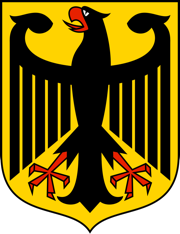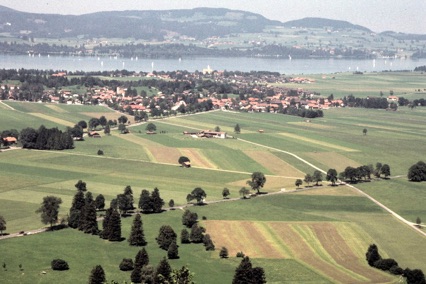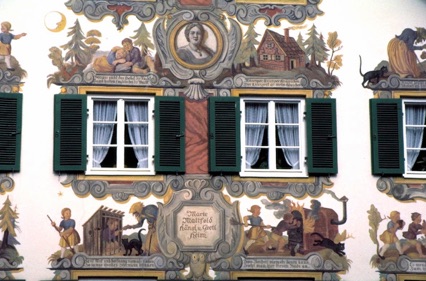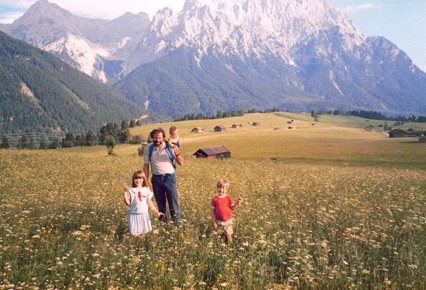Europe 1987

Kyrgyzstan and Tajikistan 2018

Although we understood that the toilets and washing area opposite our accommodation block were for both men and women, Di found it somewhat unsettling to enter this morning and find lines of men washing, but no women. It turned out that the ladies’ area was upstairs.
Breakfast this morning included very tasty muesli, and we felt good because we had clear, fine weather – a most welcome change. Our travel today was to comprise a clockwise 200-kilometre round trip to the royal castle at Neuschwanstein.
We began by driving west from Mittenwald through some lovely alpine scenery, criss-crossing the German-Austrian border through Lermoos, Reutte and Pinswang in Austria, and then back into Germany near Füssen, arriving at Neuschwanstein Castle mid-morning.
As we were travelling with children, we had deliberately avoided castles for most of the trip because – well, most children find both glorious architecture and historical narratives largely irrelevant to their everyday personal priorities. However, we thought that Neuschwanstein should be an exception, being the very epitome of a fairy-tale castle. With its tall pinnacles and turrets, together with its setting on a hill overlooking the expanses below and the Alpine peaks above, it seemed to be perfect real-life depiction of the type of castle you would expect to find in any Disney fairy-tale movie.
Although its architecture suggests an origin in the Middle Ages, Neuschwanstein Castle is actually fairly new (by the standards of castles as seen by adults, but maybe not by children), having been built between 1869 and 1886 under the orders of “mad” King Ludwig II of Bavaria. He didn’t experience castle life for long, however. In the same year that the castle was completed, he was informed by a government commission that he had been removed from office, and he drowned a few days later.
After a very steep walk up the hill from the car park, we had to queue for about an hour to enter the castle. The elaborate interior probably gave us a glimpse into the Mad King’s state of mind. On the third floor was the artificial cave, complete with stalagmites and stalactites, and the fourth floor included a copy of the Meistersänger Hall in Wartburg. It was very frustrating that no photography was permitted inside, although the shutter on Di’s camera seemed to release accidentally on two occasions .
After we had completed our guided tour through the elaborate rooms, we walked around to the bridge overlooking the castle, which provided us with superb views of the castle, the lake beyond (Forggensee) and the surrounding plain.
Having completed our visit, we continued our driving circuit from Neuschwanstein, driving first northwards through Schwangau before turning east at Lechbruck to drive through Bad Kohlgrub and Oberammergau. Oberammergau is, of course, famous as the location of the annual Passion Play, a tradition begun by the town’s inhabitants in 1632 as a gesture of gratitude for the town’s population surviving the Black Plague. Naturally, the play (which takes a full day for each performance) was not being performed during our visit, but we made a brief stop to admire the artistically painted facades on the houses, often on themes such as children’s stories, before continuing south back to Mittenwald.
Upon returning to the Youth Hostel, we could see that the surroundings were simply begging us to go walking through the alpine grasslands in the afternoon sun, which is precisely what we did. I thought it was a highlight of the entire trip, akin to a vision of walking in heaven.
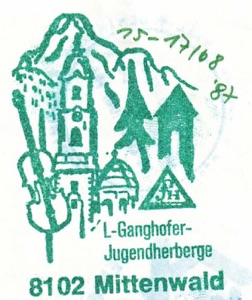

Day 35
Mittenwald and Neuschwanstein
Sunday 16 August 1987
